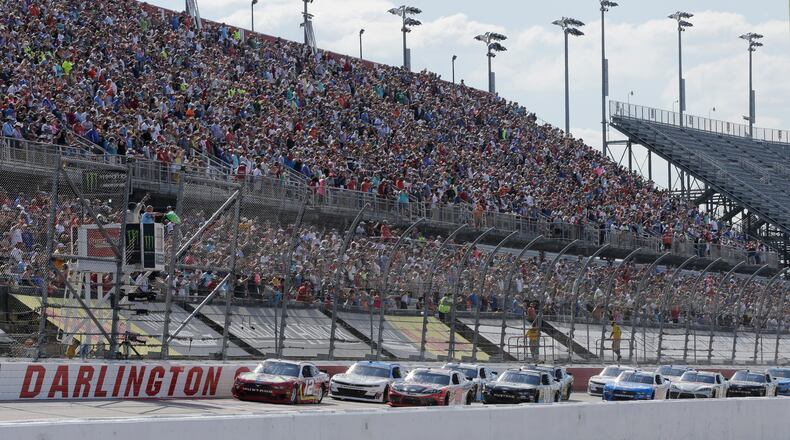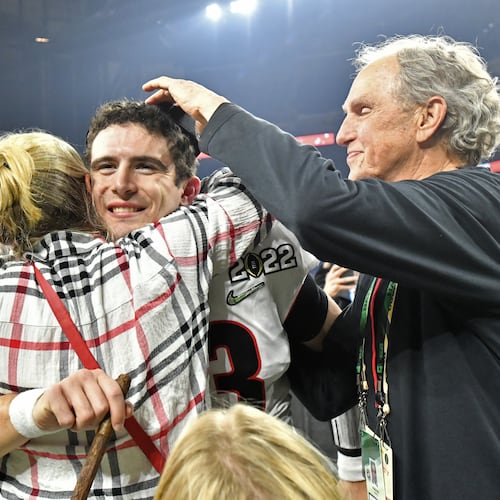Gentlemen, restart the sports world.
In only two weeks, so NASCAR says, the command will be given to begin racing again at one of the real stock-car cradles, Darlington. And with that comes a tentative first step back to live sports in America. (Horse racing has carried on sporadically throughout the coronavirus shutdown, and now the car jockeys would join their much slighter distant cousins).
Plenty of good seats are not available. There will be no fans in the stands. There will be no practice sessions nor qualifying. Teams will be limited in size. Any Victory Lane celebration figures to be muted. It’s a ghost race, but a race nonetheless, and that is in a small way heartening.
The decision to be the first sport back –albeit in a drastically scaled-back form – puts considerable pressure on NASCAR to get this right. Suddenly, the greatest danger here is not the flaming, driver-strapped-into-a-170-mph-cement-mixer crash, but rather one spiky virus. Let one driver, family or crew member fall ill following the first Darlington race – regardless where he or she may have contracted it – and every other sport pondering a restart will break out its own caution flag.
As confidently as anyone can speak now, Steve O’Donnell, NASCAR’s executive vice president and chief racing development officer, was ready to see his sport take the point in the journey back toward normalcy.
“We realize up front it’s a huge responsibility for us as a sport,” he said Friday. “But I’m also confident in the group we’ve gathered to put this plan together. Our entire industry has come together to believe in the plan we’ve put together.
“We’re certainly going to learn as we go. But the process we put in place, I think gives the industry the confidence that we can be first, we can do this in Darlington.”
Being the first also gives racing a stage all to itself, and a brief opportunity to capitalize on the lack of competition for eyeballs. Face it, the car fights have fallen off in popularity and now NASCAR has no one named Earnhardt to lead the way in cap and T-shirt sales. Kind of like cargo pants, NASCAR has fought for its place in the hearts and minds of the public since the early 2000s.
Now, those who have said, “I wouldn’t watch a NASCAR race if it was the only thing on,” have had their bluff called.
Will a sports-starved country turn its lonely gaze to a left-turn festival at Darlington, and, then, can racing put on a show that might turn the desperate and the curious into return customers? That’s a big ask, for sooner or later, the cool kids are going to have to come out and play again, right?
In your isolation, you have watched “Tiger King.” You have watched replays of events that happened back when you were thin. God help you, you have even watched “Guy’s Grocery Games.” But will you now watch a 400-miler from South Carolina?
Let’s remember where we were on the weekend of March 13-15. That’s when racing came to a confused and screeching halt – in Atlanta, of course. At first, the Folds of Honor QuikTrip 500 was going ahead as planned, in stubborn defiance of the growing coronavirus menace. Then, it was going to be held without fans. Then, well, just forget it, we have to spend the rest of the spring in a bubble.
One report had the Atlanta Motor Speedway race rescheduled for June 7, although no track official has confirmed it. Nothing really can be set even in Silly Putty at this stage, not until NASCAR gets some read on the Darlington Experiment.
It is an intense trial planned here: Seven events in 11 days at Darlington and Charlotte Motor Speedway, involving the big guys, the Triple-A Xfinity series and the trucks. That includes the longest of races, the Coca-Cola 600 on Memorial Day Weekend, just as nature intended. NASCAR has embarked on a saturation bombing campaign that hopefully doesn’t blow up on itself.
In the process, we’ll gain another glimpse at the warped ways we are defining risk these days: The speeding cars won’t stay six feet apart, put the people must.
About the Author
The Latest
Featured


